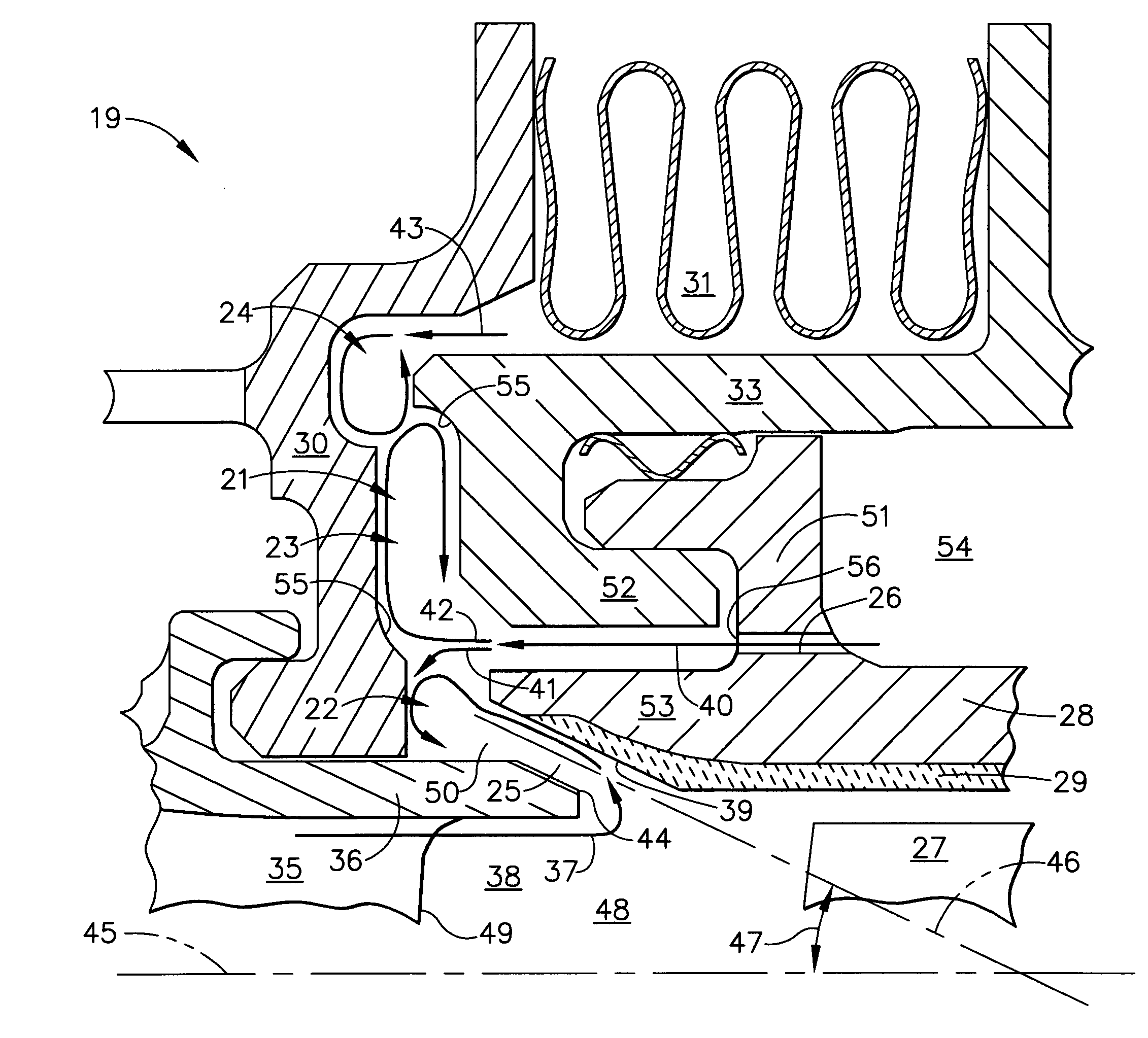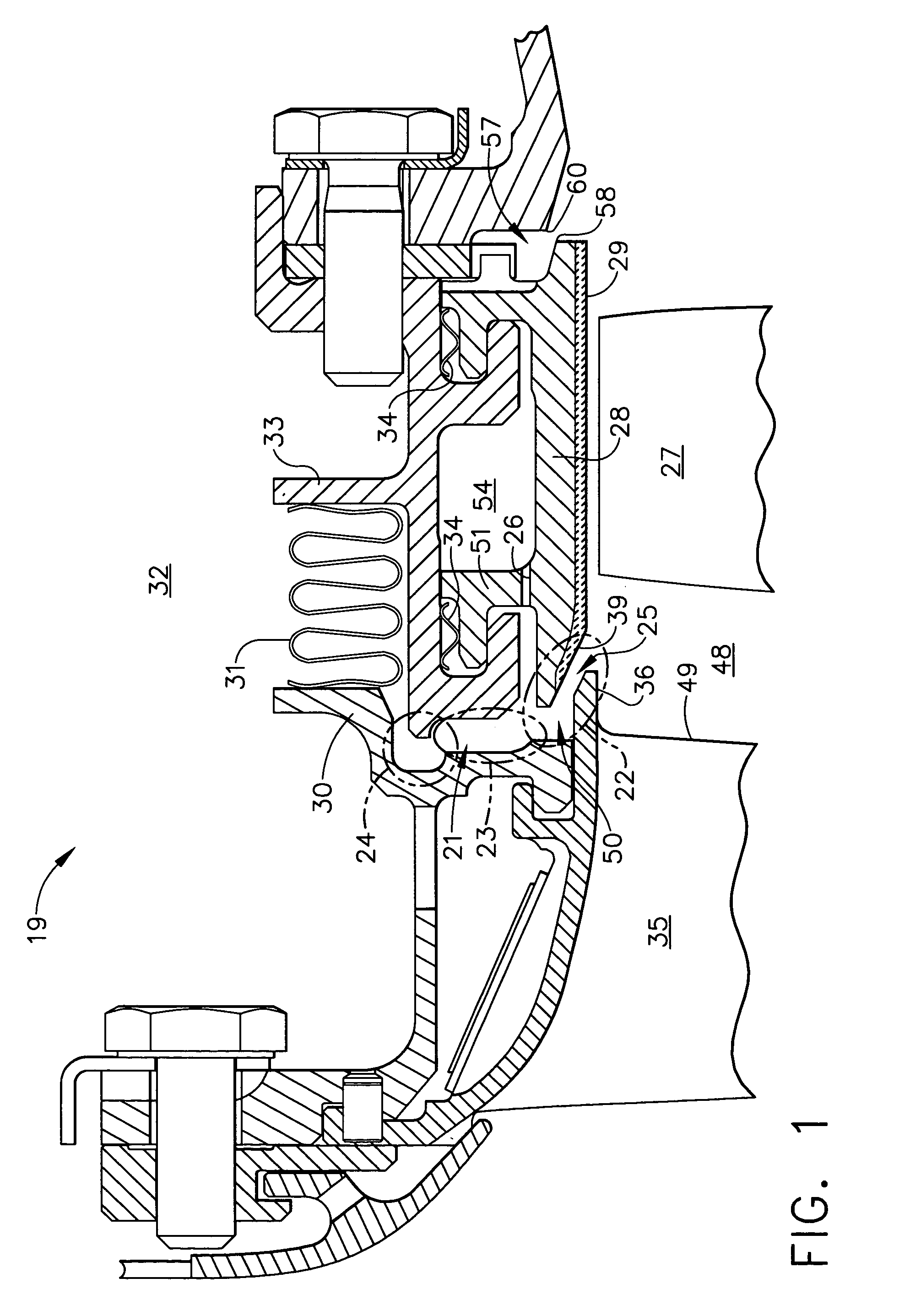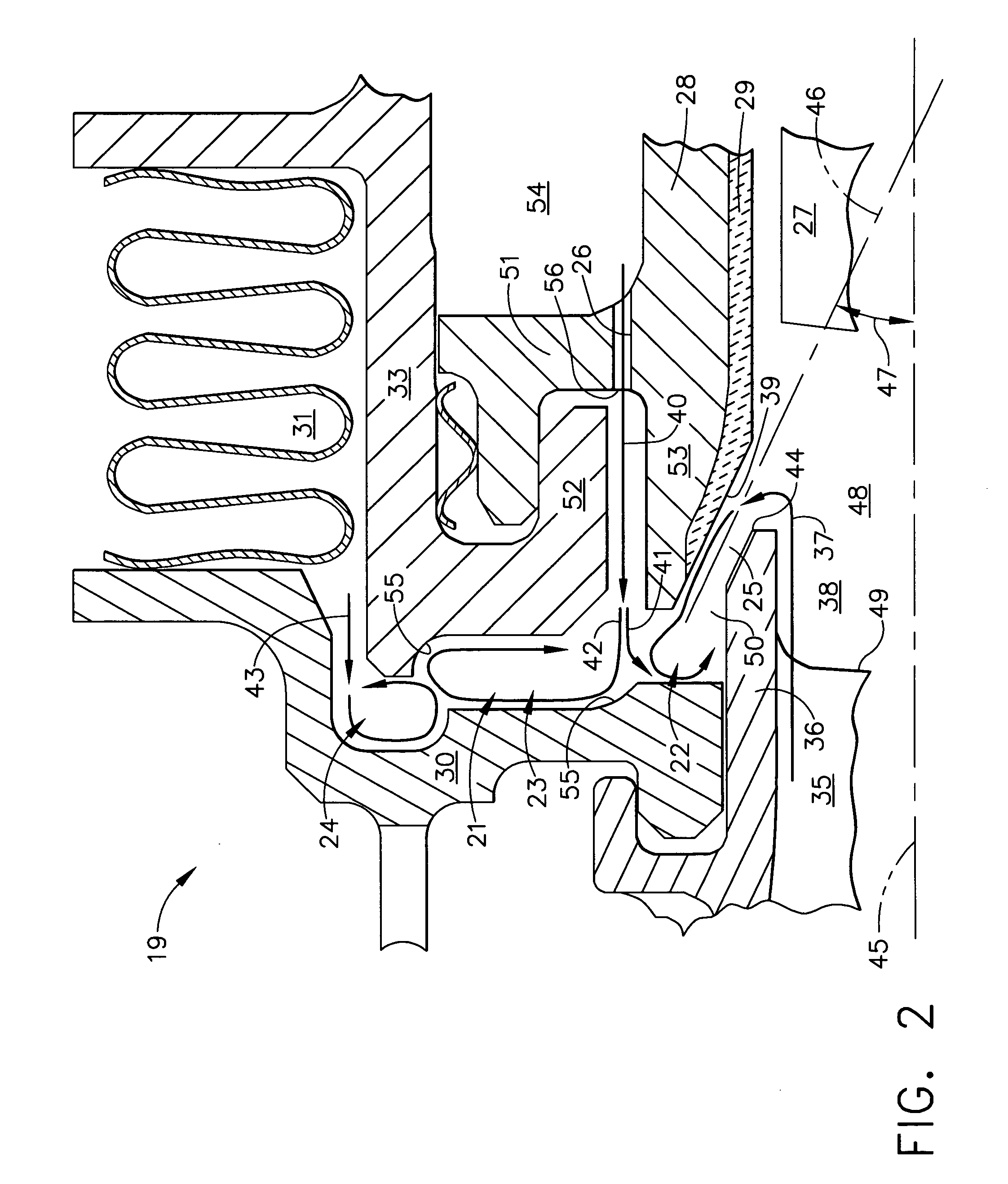Gas turbine cooled shroud assembly with hot gas ingestion suppression
a technology of gas turbines and shroud assemblies, which is applied in the direction of machines/engines, stators, liquid fuel engines, etc., can solve the problems of turbine shroud components, turbine shroud assemblies that have experienced significant distress, and the contact between the turbine shroud assembly and the blade tips of the rotor
- Summary
- Abstract
- Description
- Claims
- Application Information
AI Technical Summary
Benefits of technology
Problems solved by technology
Method used
Image
Examples
Embodiment Construction
[0025]The following detailed description is of the best currently contemplated modes of carrying out the invention. The description is not to be taken in a limiting sense, but is made merely for the purpose of illustrating the general principles of the invention, since the scope of the invention is best defined by the appended claims.
[0026]The present invention generally provides gas turbine cooled shroud assemblies and methods for producing the same. The cooled shroud assemblies produced according to the present invention may find beneficial use in many industries including aerospace and industrial applications. The cooled shroud assemblies of the present invention may be beneficial in applications including electricity generation, naval propulsion, pumping sets for gas and oil transmission, aircraft propulsion, automobile engines, and stationary power plants. This invention may be useful in any gas turbine engine application.
[0027]In one embodiment, the present invention provides ...
PUM
 Login to View More
Login to View More Abstract
Description
Claims
Application Information
 Login to View More
Login to View More - R&D
- Intellectual Property
- Life Sciences
- Materials
- Tech Scout
- Unparalleled Data Quality
- Higher Quality Content
- 60% Fewer Hallucinations
Browse by: Latest US Patents, China's latest patents, Technical Efficacy Thesaurus, Application Domain, Technology Topic, Popular Technical Reports.
© 2025 PatSnap. All rights reserved.Legal|Privacy policy|Modern Slavery Act Transparency Statement|Sitemap|About US| Contact US: help@patsnap.com



